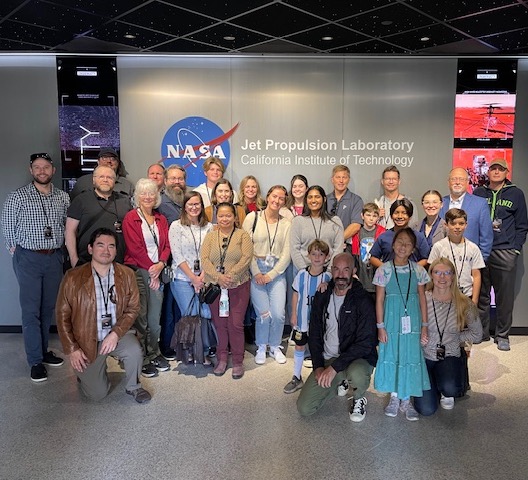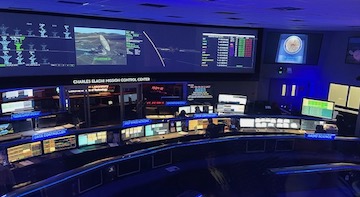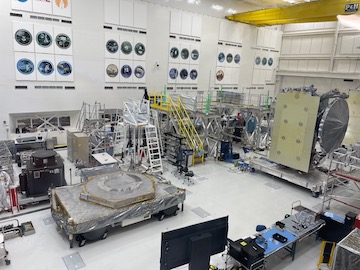Pepperdine University Tours NASA's Jet Propulsion Laboratory

NASA's Jet Propulsion Laboratory (JPL) in Pasadena, California, recently sponsored a tour of its facilities for Pepperdine University students, staff, faculty, and friends. A total of 28 students, staff members, faculty, and friends of the University attended the two-hour guided visit, which included access to the lab’s command center, Earth Science Center, and clean room––where the Europa Clipper, a state-of-the-art satellite, is being built in preparation for an October 2024 launch.
“We wanted to bring together a group that would appreciate the scientific advances of the JPL as well as marvel at the beauty of the universe that the JPL staff continues to explore,” says Lila McDowell Carlsen, interim vice provost and professor of Hispanic studies. “It was an awe-inspiring experience. Students also learned about the internship and research opportunities offered by the laboratory.”

JPL is NASA’s only federally funded research and development center. This facility is responsible for the construction of the Mars Rovers, an assortment of deep space probes, and satellites that further humanity's understanding of the Milky Way galaxy by orbiting Earth and other planets in the local solar system.
Charles Elachi, who directed JPL from 2001 to 2016, invited Pepperdine to tour the facility after speaking at the University’s Human Centered AI Conference during the fall semester. In consultation with Fabien Scalzo, associate professor of computer science and director of the Keck Data Science Institute, Carlsen organized and supported the event, opening it up to the Seaver College community at large.

Tour participants witnessed scientists communicate and garner information from different satellites in the Charles Elachi Commander center. Here, researchers gather earth science-related data from more than two dozen NASA missions currently in progress. These missions are part of the NASA “Eyes on the Earth” prerogative, which monitors the varying vital signs of the planet, such as air temperature, soil moisture, and sea levels.
A highlight of the tour was a preview of the Europa Clipper, the 7,145 pound satellite being built in order to study Jupiter’s icy moon, Europa. NASA scientists are hopeful that Europa has the attributes necessary to support life underneath its icy surface. The mission launch period opens on October 10, 2024; however, the satellite will begin journeying toward Florida in May 2024.